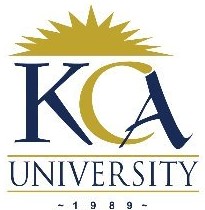 UNIVERSITY EXAMINATIONS: 2013/2014
UNIVERSITY EXAMINATIONS: 2013/2014
ORDINARY EXAMINATION FOR THE DIPLOMA IN BUSINESS
INFORMATION TECHNOLOGY
DIT 301 COMPUTER OPERATING SYSTEMS
DATE: AUGUST, 2014 TIME: 1½HOURS
INSTRUCTIONS: Answer Any Three Questions.
QUESTION ONE
(a)In the context of a computerized environment:-
i. Define the term ‘operating system’ [2 Marks]
ii. List and describe six major functions of computer operating system
[6 Marks]
(b) Explain the following terms as applied in computers:- [4 Marks]
Buffering
Spooling
(c)State the purpose of swap file in memory management [2 Marks]
(d) Explain two advantages of NTFS file system over FAT file system [2 Marks]
(e)Distinguish between synchronization and mutual exclusion while running
concurrent processes [4 Marks]
QUESTION TWO
(a) With the aid of a diagram, describe the following memory management
techniques as used by operating systems: – [6 Marks]
i. Paging
ii. Single continuous allocation
(b) i. In relation to operating systems, explain the term ‘process’ [2 Marks]
ii. List and briefly describe the five states of a process [5 Marks]
(c) Differentiate between ‘block’ and character devices as used in input/output
devices [4 Marks]
QUESTION THREE
(a) Describe three file management activities supported by an operating systems
[6 Marks]
(b) Distinguish between the following terms as applied in operating systems:-
[8 Marks]
i. Multiprocessing & multiprogramming
ii. Command languages & job control languages
(c) State three objectives of an operating system [3 Marks]
(d) Write MS DOS commands that would carry out the following:-
i. Display all the directories stored in Drive C
ii. Partition a hard disk
iii. Create a folder in drive C:\ named Operating system
[3 Marks]
QUESTION FOUR
(a) Differentiate between pre-emptive and non-preemptive policies as used in process
scheduling [2 Marks]
(b) Explain the following terms as used in operating systems:- [6 Marks]
i. Thread
ii. Internal fragmentation
iii. Shell
(c) Explain the following I/O techniques giving an example in each case: –
[6 Marks]
i. Buffering
ii. Caching
(d) State four objectives of the input/ output device manager [4 Marks]
(e) Distinguish between response and turnaround time as used in process scheduling
[2 Marks]
QUESTION FIVE
(a) State four requirements of memory management in respect to operating system
[4 Marks]
(b) i. Define the term ‘deadlock’ [2 Marks]
ii. List and briefly describe four conditions necessary for a deadlock to
occur [8 Marks]
iii. Suggest two ways of avoiding the deadlock [2 Marks]
(c) Highlight four types of computer operating systems you are familiar with
[4 Marks]
